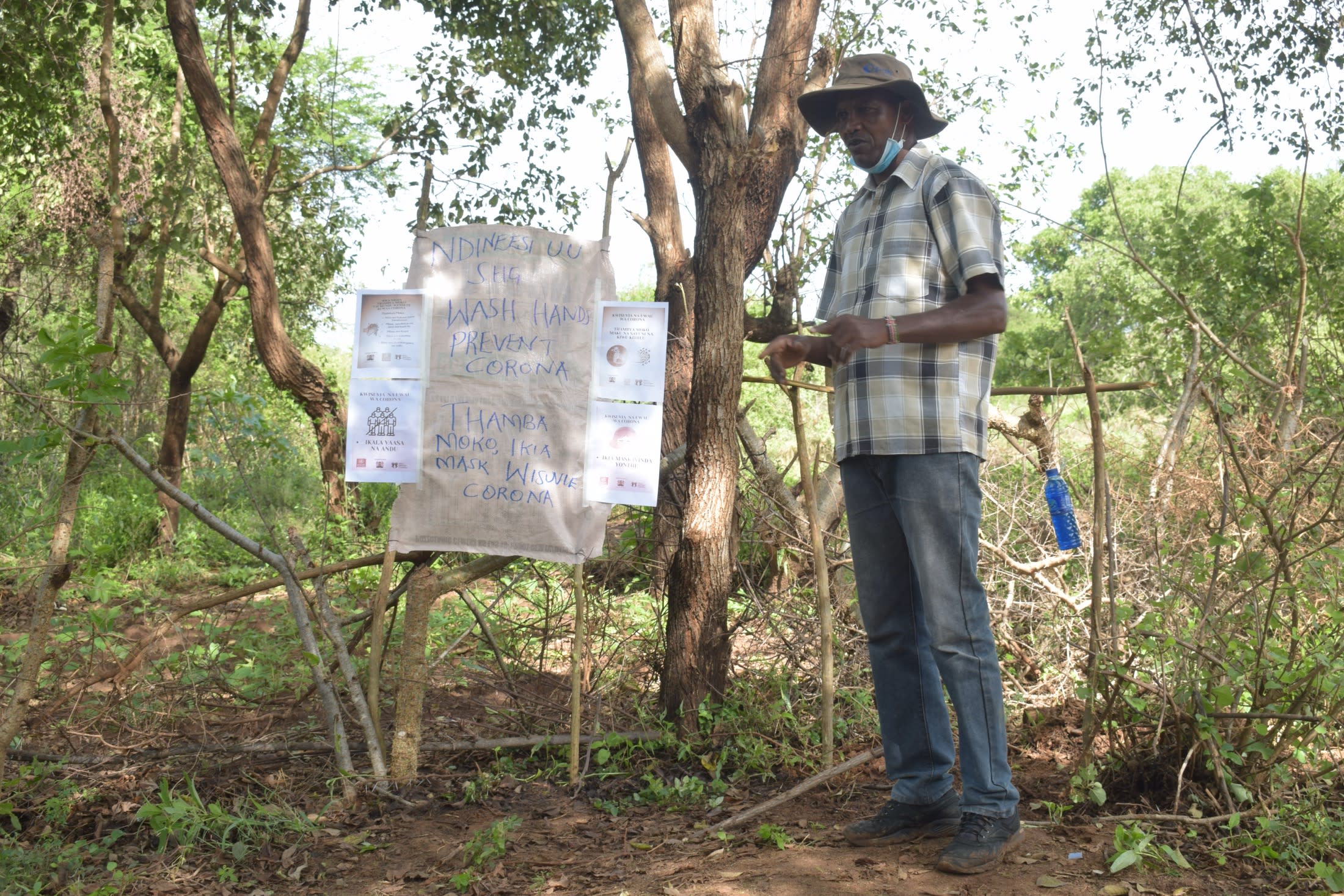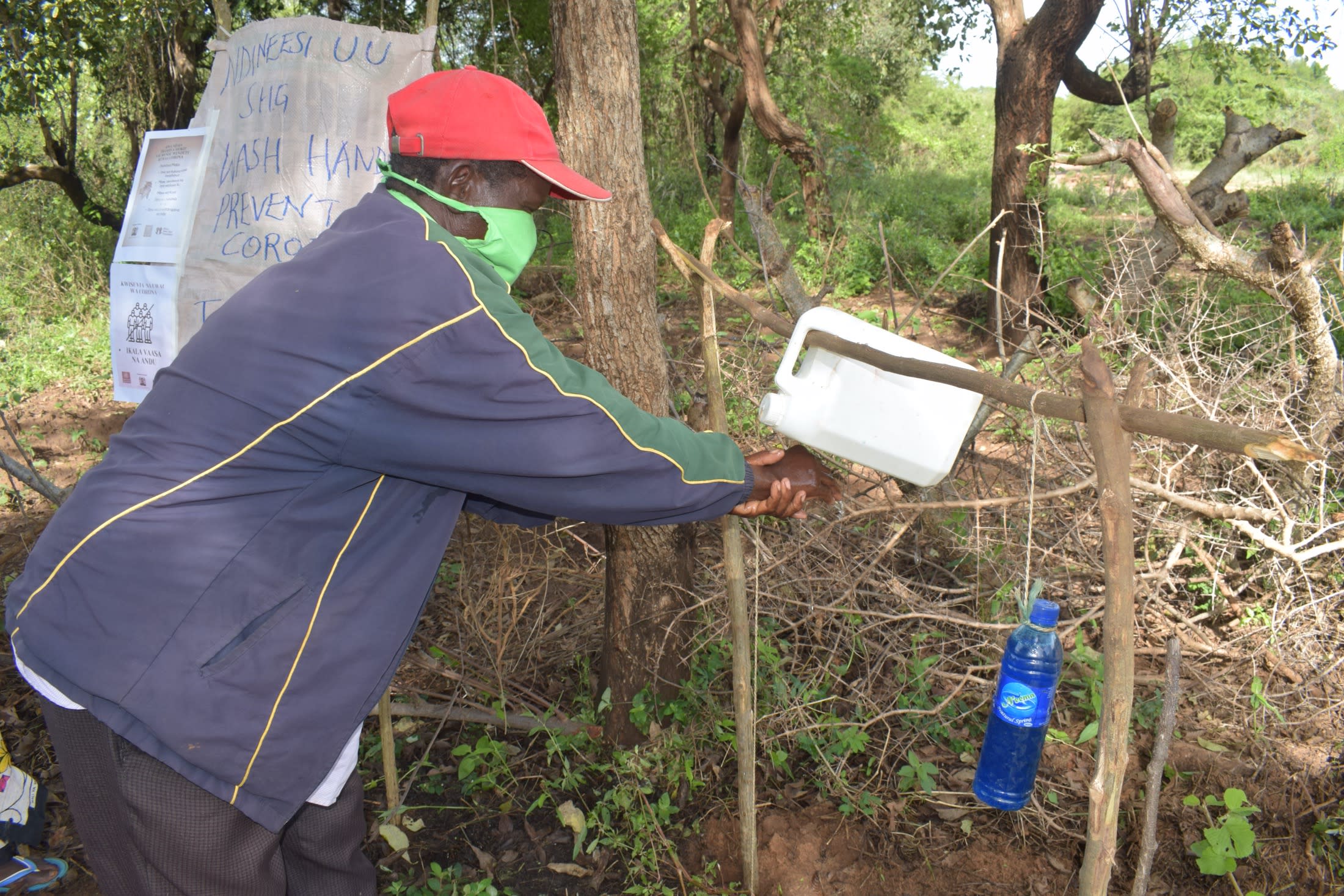Katalwa Twooka Oyu Self-Help Group was formed in the year 2007 and registered with local government in the year 2009. The group is found in Katuluni Village, which has a population of just 47 people. However, their great location has a population of 2,256 people. (Editor's Note: While this many people may have access on any given day, realistically a single water source can only support a population of 350-500 people. This community will be a great candidate for a second project in the future so that adequate clean water is available. To learn more, click here.)
The self-help group has a membership of 23 people who started the group with the aim of doing merry-go-round banking, poultry, and goat farming. They also wish to help each other do terracing on their farms and establish kitchen gardens. But due to the issue of not having enough water in their region, they were not in a position to start gardening. The average age is 54 years, with the mean household size being five members.
A while back, the son of one of the members who works as a lab technician in Garissa District Hospital saw ASDF's profile on Facebook. He then contacted the area's field manager, Cornelius Kato, and expressed his interest to put forward groups from his village. He and the area chief brought together 12 groups for us to meet with. From this pool, three pilot self-help groups were chosen - but Katalwa Twooka Oyu was not one of them. They instead opted to help one of the pioneer groups finish all of their activities as they leaned about how these projects worked. Later, when they felt ready to start, they gave the area field officer, Benedetta Makau, their registration documents and were fully brought on board for this water project!
Water
Katuluni Village relies on holes dug in the riverbed to get their water. This is used for drinking, cooking, cleaning, and watering livestock and farms. River Nuu is located over two kilometers for many people, and so it's helpful to bring a donkey that can carry a heavier load.
There is no doubt this water is contaminated; this surface water is subjected to erosion, dirty surface runoff, and animal waste. The group reports that during the driest months of the year, they have to walk farther along the riverbed to find any water at all - up to five kilometers.
"Fetching water has always been a hard task. I walk for more than five kilometers to River Nuu with a donkey to fetch water from open scoop holes. I have no knowledge of water treatment methods and other sanitation practices," reported Mrs. Margaret Kasau.
After drinking this water, community members suffer from typhoid, amoeba, bilharzia, and ringworm. On top of all the time it took to get water, more time is lost as they fight waterborne diseases.
Sanitation
100% of group members have a latrine at home. Most of these don't have doors, but instead have curtains hanging in the opening. Despite each household having a latrine, open defecation is still an issue here. There's no good place to relieve oneself on the long walk to water!
There are no hand-washing stations here, while around half of households have other helpful tools like dish racks and clotheslines. Trash is disposed of improperly, with piles behind the household compound.
Here's what we're going to do about it:
Training
Since this is our first hygiene and sanitation training in Kataluni, training will be held for four days. The members will learn about useful practices and tools to improve health, and will be encouraged to share those with their families and neighbors. Water transport, storage, and treatment methods will be taught, and hand-washing will be a focus. Group members will learn how to make their own hand-washing stations with everyday materials. To motivate participants, we must show the links between these activities and their people’s health.
Sand Dam
Their first proposed site for a sand dam in Kataluni was also approved by our technical team because there is firm bedrock and wide banks. This particular sand dam is projected to be 21.9 meters long and 4.1 meters high.
This sand dam will be one of many construction projects to come in the next few years. We will spend a total of five years unified with this community to address the water shortage. More sand dams will be built to transform the environment. As the sand dams mature and build up more sand, the water tables will rise. Along with these sand dams, hand-dug wells will be installed to give locals a good, safe way to access that water.
With these projects, clean water will be brought closer to hundreds living around Kataluni.
As the sand dam construction begins, community members will start excavating their first adjacent hand-dug well (click here to see that well project).
This project is a part of our shared program with Africa Sand Dam Foundation. Our team is pleased to provide the reports for this project (formatted and edited for readability) thanks to the hard work of our friends in Kenya.

 Sand Dam
Sand Dam
 Rehabilitation Project
Rehabilitation Project


































